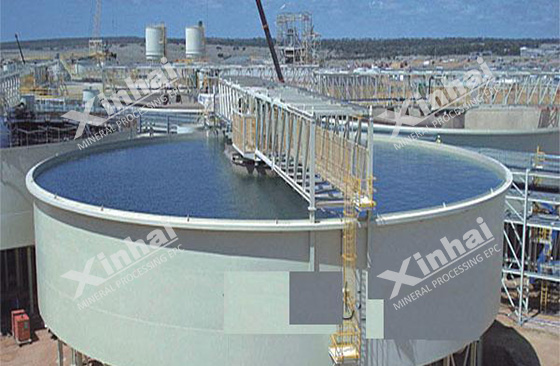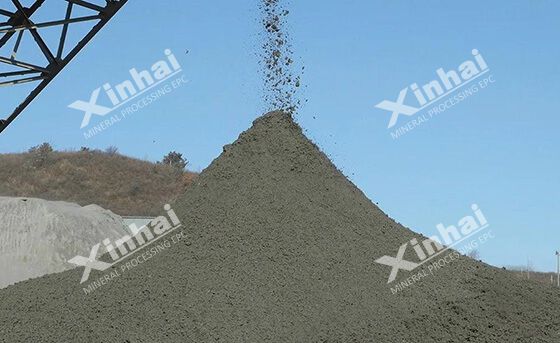
If you want to know more information, like quotation, products, solutions, etc., please contact us online.
With the rapid development of the global mining industry, the number of ore tailings ponds is increasing year by year, and most concentrators adopt a wet direct discharge method for tailings. In this treatment method, the tailings naturally precipitate, resulting in reduced dewatering efficiency. In order to better solve the problems of slow dehydration of tailings and environmental pollution, the concentrator can adopt the method of dry storage of tailings. There are different forms of dry storage of ore tailings, and there are also various ways to remove moisture from the tailings. The following will introduce you to the dry treatment methods of tailings around the two aspects of tailings dry storage and dehydration methods.
Use the table of contents below to navigate through the guide:

1. During dry storage of tailings, the tailings slurry discharged from the mineral processing is sent to the mixing tank for buffering, and then the slurry is pumped to the filter press workshop for processing. This process can use a box filter press. After being fully squeezed by the filter press, it becomes a dry flake-shaped tailings cake. At this time, the moisture in the tailings has been greatly reduced. The tailings slag is transported to the dry stockpile via a belt conveyor for layered stacking.
2. Dry storage of tailings can also be carried out with the help of thickeners. The ore dressing tailings slurry flows automatically into the deep cone thickener for concentration and dehydration. The concentration of the slurry is increased and the water content is reduced. The underflow slurry of the thickener is sent to the ceramic vacuum filter through the slurry pump for further dehydration. The resulting dry tailings slag is then sent to the tailings yard for storage by a belt conveyor for further processing.
Types of dry storage can be divided into two types: pure dry storage and paste discharge.
1. Pure dry storage: After the ore dressing tailings are processed by thickeners and dehydration equipment, the moisture content does not exceed 20% before being sent to the tailings storage for storage.
2. Paste discharge: The ore dressing tailings slurry is concentrated by a thickener and then incompletely dehydrated. The concentration of the slurry is generally above 70% and then sedimented into coarse, medium and fine particles.

The main ways to remove mineral processing tailings slurry include pressure filtration, vacuum filtration, multi-stage thickening and sedimentation tanks. Choosing the appropriate dewatering method based on the requirements and costs of the concentrator can greatly improve the efficiency of tailings treatment.
1. Tailings filter press method: The tailings squeeze out part of the water in the tailings sand under the action of pressure. After filtering, the water content in the tailings sand is reduced to about 20%. This method is suitable for processing relatively coarse-grained tailings, and the equipment used is mainly plate and frame filter press and box filter press.
2. Tailings vacuum filtration method: It mainly uses vacuum negative pressure to remove moisture in the tailings. The moisture content in the tailings sand after vacuum adsorption is also about 20%. This method is suitable for processing tailings with finer particle sizes. In mines, commonly used equipment include ceramic filters and belt vacuum filters.

3. Multi-stage thickening of tailings: After the tailings are thickened in multiple stages, the slurry concentration can be controlled at 50% to 60%, thus forming a highly concentrated tailings paste. According to the concentration of tailings in Chengdu, it can be divided into three types: high concentration tailings slurry, low yield stress paste, and high yield stress paste. There are two reasons why tailings after thickening treatment are stored in paste: first, the tailings will not be classified into coarse and fine particles, and second, the tailings paste needs sufficient time to dry and solidify. The advantage of paste storage is that it will not cause a hanging lake in the tailings reservoir, and the tailings will not easily liquefy.
4. Tailings sedimentation tank treatment: Multiple advection sedimentation tanks are connected in series to concentrate and clarify the tailings according to the laws of natural sedimentation, and then discharge a large amount of tailings water. At the same time, flocculants can be added to the slurry to assist in accelerating the dissolution of the tailings particles. settlement. The concentration of tailings increases with time, and the entire sedimentation process takes a long time, resulting in a low processing capacity of concentrated tailings in the sedimentation tank.
.jpg)
The above content is a brief introduction to the dry storage and dehydration methods of ore tailings. In actual production, the tailings warehouse is a necessary facility to maintain normal production of the mine, and dry tailings storage has important practical significance for environmental safety. When selecting a tailings treatment method, the mineral processing plant should choose a reasonable and economical treatment method to avoid problems such as resource waste and cost increase. Xinhai Mining can customize the design of tailings ponds and tailings treatment processes based on the characteristics of the concentrator, and provide professional and efficient tailings dehydration and concentration equipment to help the concentrator improve the utilization rate of tailings and the economic benefits of the concentrator.
Please leave your message here! We will send detail technical info and quotation to you!
© 2020 Shandong Xinhai Mining Technology & Equipment Inc.
